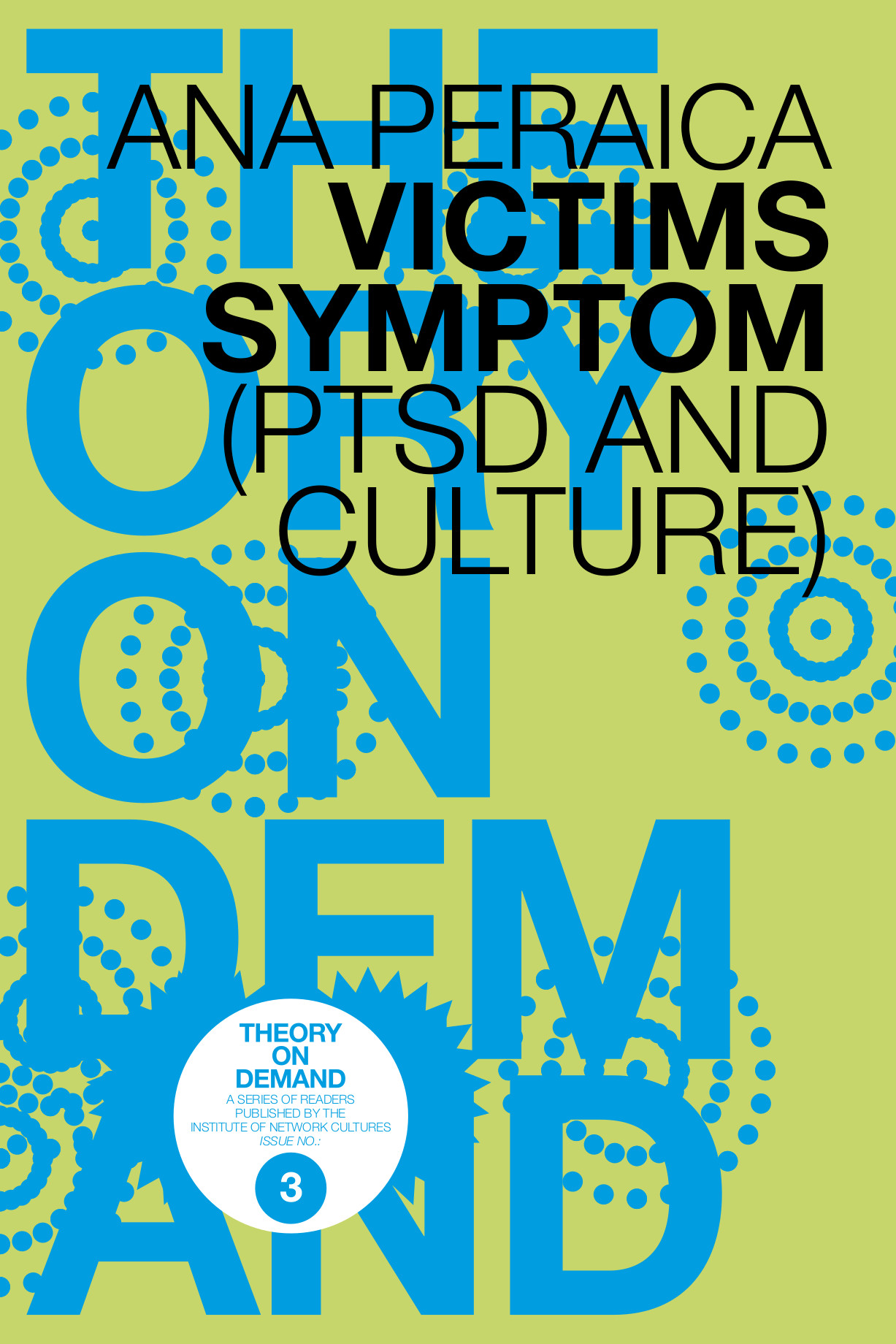Ana Peraica (ed.): Victims Symptom: PTSD and Culture (2009)
Filed under book | Tags: · media, memorial, memory, therapy, trauma, war

“Victims’ Symptom is a collection of interviews, essays, artists’ statements and glossary definitions, which was originally launched as a Web project (http://victims.labforculture.org). Produced in 2007, the project brought together cases related to past and current sites of conflict such as Srebrenica, Palestine, and Kosovo reporting from different (and sometimes conflicting) international viewpoints. The Victims Symptom Reader collects critical concepts in media victimology and addresses the representation of victims in economies of war.”
With texts by Sezgin Boynik, Adila Laidi Hanieh, Geert Lovink, Ana Peraica, and Stevan Vuković. Interviews by Ana Peraica (with Enrique Arroyo, Noam Chomsky, Agricola da Cologne, Anur Hadžiomerspahic, Joseph de Lappe) and Marko Stamenkovic (with Peter Fuchs, Jonas Staal, Carlos Motta, Neery Melkonian and Tomas Tomlinas). Artists’ statements by Mauricio Arango, Alejandro Duque, Andreja Kuluncic, Marko Peljhan, and
Martha Rosler. Glossary by Tihana Jendricko and Tina Peraica.
Publisher Institute of Network Cultures, Amsterdam, 2009
Theory on Demand series, 3
Creative Commons BY-NC-ND 3.0 Netherlands License
ISBN 9789078146117
PDF (updated on 2018-7-26)
Comment (0)Mark Wollaeger: Modernism, Media, and Propaganda: British Narrative from 1900 to 1945 (2008)
Filed under book | Tags: · cinema, film, literature, media ecology, modernism, narrative, propaganda, theatre, united kingdom, war

Though often defined as having opposite aims, means, and effects, modernism and modern propaganda developed at the same time and influenced each other in surprising ways. The professional propagandist emerged as one kind of information specialist, the modernist writer as another. Britain was particularly important to this double history. By secretly hiring well-known writers and intellectuals to write for the government and by exploiting their control of new global information systems, the British in World War I invented a new template for the manipulation of information that remains with us to this day. Making a persuasive case for the importance of understanding modernism in the context of the history of modern propaganda, Modernism, Media, and Propaganda also helps explain the origins of today’s highly propagandized world.
Modernism, Media, and Propaganda integrates new archival research with fresh interpretations of British fiction and film to provide a comprehensive cultural history of the relationship between modernism and propaganda in Britain during the first half of the twentieth century. From works by Joseph Conrad to propaganda films by Alfred Hitchcock and Orson Welles, Mark Wollaeger traces the transition from literary to cinematic propaganda while offering compelling close readings of major fiction by Virginia Woolf, Ford Madox Ford, and James Joyce.
Publisher Princeton University Press, 2008
ISBN 0691138451, 9780691138459
Length 335 pages
Jordan Crandall (ed.): Under Fire 1 & 2. The Organization and Representation of Violence (2005)
Filed under book | Tags: · art, democracy, journalism, mass media, military, politics, war

Through a series of discussions about an array of issues–battle simulation techniques and news programming, democracy and violence, the privatization of the military, and militarized bodies–Jordan Crandall explores the organization and representation of contemporary armed conflict. Moderated by Crandall, Under Fire 1 is a compilation of a series of dialogues that occurred online from January 25 through April 19, 2004 between artists, political scientists, critics, activists, and journalists around the central theme.
Publisher Witte de With, Rotterdam, 2005
ISBN 90-73362-61-X
Length 96 pages

Under Fire 2 is the second collection edited by Jordan Crandall in an ongoing project that explores the organization and representation of armed conflict. Emerging from online dialogues among a group of artists, theorists, scientists, critics, activists, and journalists during three months of 2004 and reorganized thematically, the discussions in Under Fire 2 aim to offer new insights into symptomatic violence. The book covers issues such as the privatization of the military and the contributions of commercial and independent news media, as well as representations from artistic, literary, and popular entertainment sources, to our cultural perception of conflict. Rather than relying on discourses based on Western conceptions of modernity, the project is dedicated to opening up new historical perspectives, exploring the potential of Islamist points of view as sources of critical and political debate.
Publisher Witte de With, Rotterdam, 2005
ISBN 9073362652, 9789073362659
Length 112 pages
More info (author)
More info (project site)
More info (publisher)
More info (vol 1; google books)
More info (vol2; google books)

